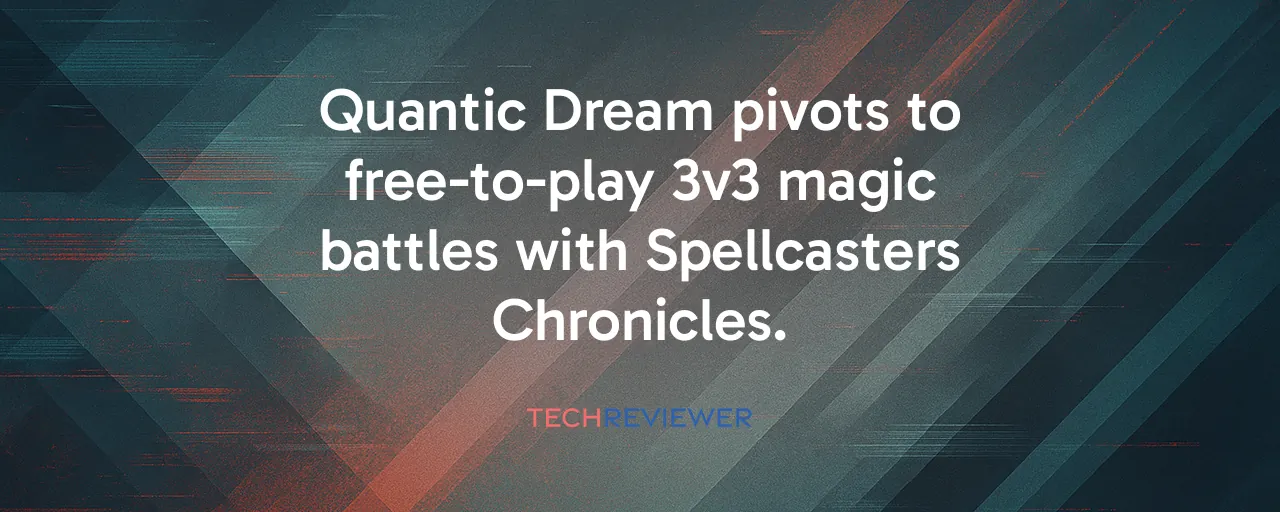A New Chapter for Quantic Dream
Quantic Dream, the studio behind the emotionally charged Detroit: Become Human, has spent decades crafting stories where player choices shape intricate narratives. Now, with Spellcasters Chronicles, announced on October 16, 2025, the Paris-based team is diving headfirst into uncharted waters: a free-to-play 3v3 action-strategy game. This isn't just a new project; it's a reinvention of what the studio stands for, trading solitary tales for chaotic, team-driven battles. Backed by NetEase's 2022 acquisition, Quantic Dream has doubled its workforce and opened a Montreal office, giving it the muscle to juggle this multiplayer experiment alongside the long-awaited Star Wars Eclipse.
The move raises eyebrows. Fans who cherished Heavy Rain's moral dilemmas or Detroit's android uprising might wonder if Quantic Dream can pull off this pivot. The game's reveal trailer, packed with mages soaring through mystical arenas and summoning creatures, promises a bold departure. But with the multiplayer market already crowded, can a studio known for single-player depth make waves in a genre dominated by League of Legends and Dota 2?
Magical Combat With a Strategic Twist
Spellcasters Chronicles drops players into 25-minute 3v3 matches, where mages wield over 50 spells and summons, customized through a deck-building system. Think of it as part hero shooter, part MOBA, with a dash of card game strategy. Unlike traditional MOBAs, where players slog through ground-based lanes, this game embraces verticality. Mages fly freely across arenas, capturing altars and shattering enemy Lifestones. The aerial mobility feels like a breath of fresh air, letting players outmaneuver opponents in three-dimensional space, a rarity in the genre.
The archetype system keeps things accessible. Players pick roles such as support, tank, or damage dealer, while tweaking their spell loadouts to suit their style. A well-timed Titan summon can swing a match, creating those heart-pounding moments that Quantic Dream hopes will hook players. Game director Grégorie Diaconu has described the project as a way to channel the studio's storytelling passion into shared, player-driven worlds. But with such complexity, balancing 50-plus spells across millions of deck combinations is no small feat.
Learning From Past Pivots
Quantic Dream isn't the first to chase multiplayer glory. Battlerite, a 3v3 arena brawler from 2016, blended MOBA elements with fast-paced combat but fizzled out despite a loyal fanbase, unable to sustain its player population. Meanwhile, Genshin Impact, launched by miHoYo in 2020, shows a single-player studio can crack new genres with enough polish and budget, raking in over $4 billion on mobile alone. The difference? Genshin leaned on gacha monetization, while Battlerite struggled to keep players engaged long-term.
The lesson is clear: execution matters. Quantic Dream's closed beta on Steam, set for late 2025, will test whether its aerial combat and deck-building can stand out. The studio's narrative roots could give it an edge in crafting memorable characters and worlds, but the multiplayer market is unforgiving. Recent flops like Concord, which crashed in 2024 after a failed free-to-play pivot, show how even big budgets can stumble without clear differentiation.
Navigating a Crowded Arena
The free-to-play market is booming, hitting $54.52 billion in 2024 and projected to reach 62.32 billion in 2025. Yet, it's a tough space to crack. Players already sink hours into established giants, with 75 percent of gamers favoring free-to-play titles for their accessibility. Spellcasters Chronicles needs to convert 30 to 40 percent of its players into paying customers through cosmetics or battle passes to stay afloat, a tall order for a newcomer. The 3v3 format, less common than 5v5 MOBAs, might carve out a niche, but it's a gamble.
Skepticism lingers. Gaming media point to a string of failed pivots: BioWare's Anthem, Rocksteady's Suicide Squad, where single-player studios stumbled in multiplayer realms. Quantic Dream's lack of competitive game experience could trip it up, especially with the need for constant balance patches and anti-cheat systems. Still, NetEase's financial backing and the studio's TwitchCon demo on October 17, 2025, signal confidence. If the beta delivers, it could spark the kind of buzz needed to challenge genre titans.
What's at Stake for Players and the Industry
For players, Spellcasters Chronicles offers a fresh take on competitive gaming. The 25-minute matches strike a balance between quick hero shooter rounds and sprawling MOBA marathons, while deck-building lets players experiment without drowning in complexity. But competitive scenes can breed toxicity, a far cry from Quantic Dream's introspective single-player worlds. The free-to-play model also raises concerns about monetization. Will cosmetics stay fair, or will pressure to profit push pay-to-win elements?
The broader industry watches closely. Quantic Dream's pivot reflects a trend where studios chase live-service revenue to stay viable. Success could prove narrative-driven developers can adapt, blending storytelling with competition. Failure might reinforce doubts about such leaps, especially as players grow weary of live-service experiments. With Star Wars Eclipse still in development, Quantic Dream is walking a tightrope, balancing its legacy with an ambitious new vision.
